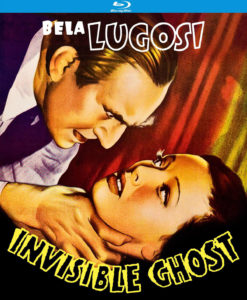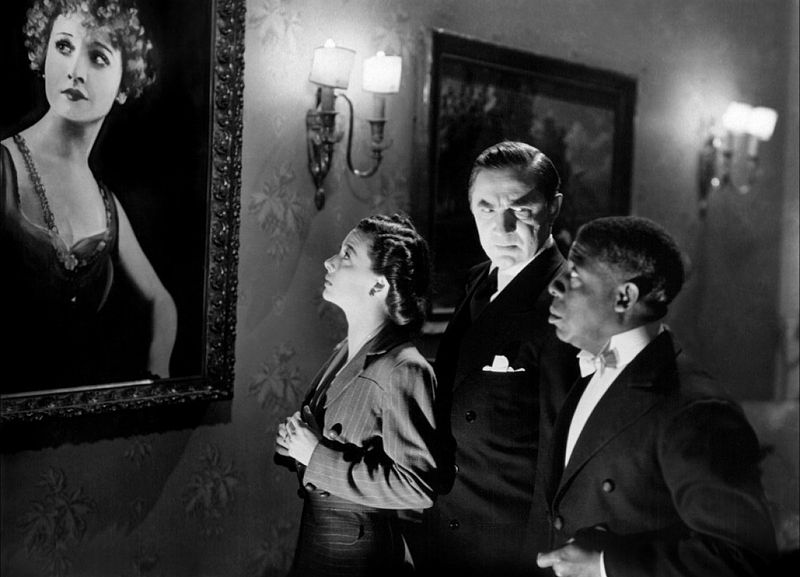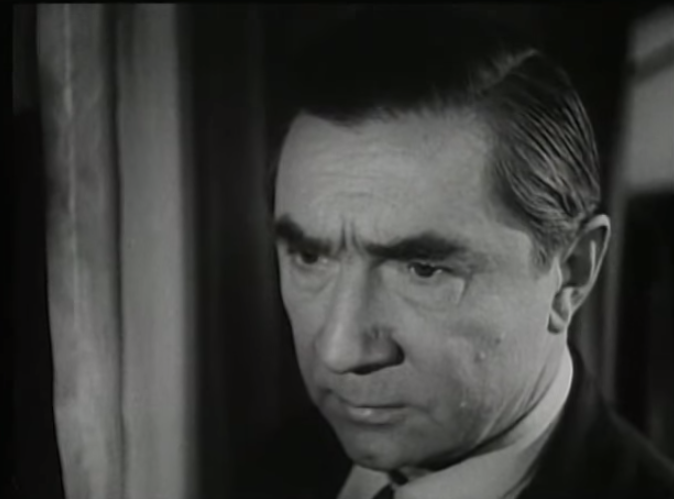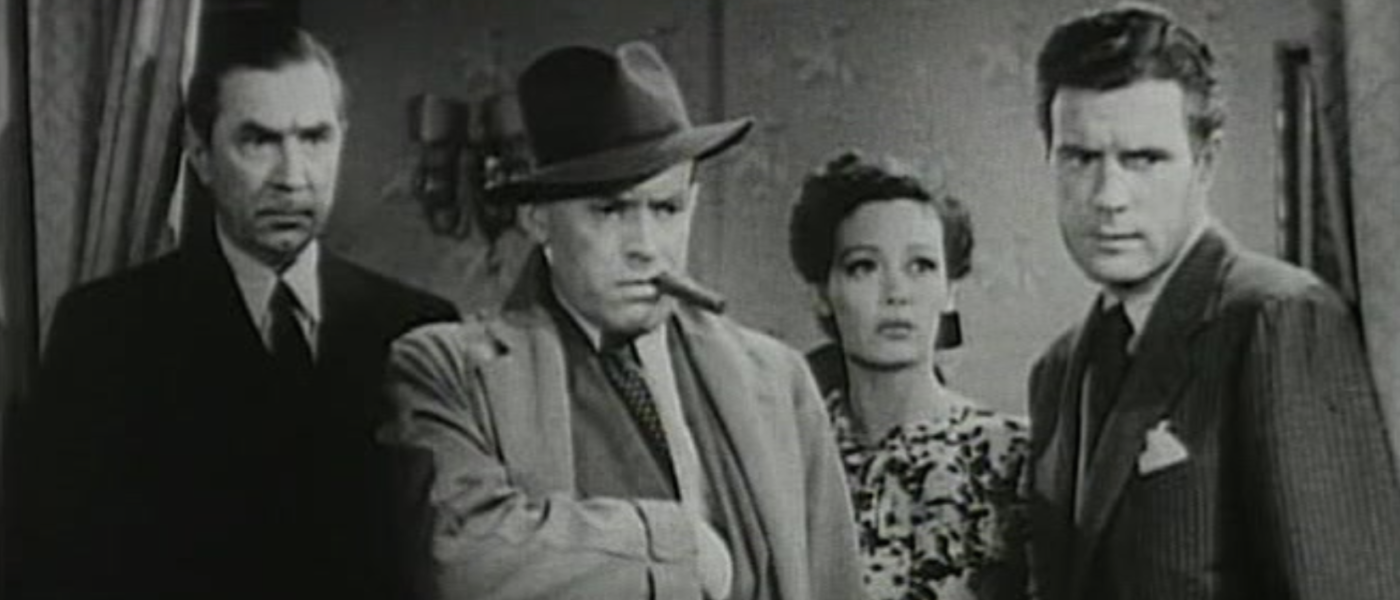Lots Of Murder, Very Little Mystery… But Lugosi!
DIRECTED BY: JOSEPH H. LEWIS/1941
STREET DATE: MARCH 21, 2017/KINO LORBER
 Nobody randomly watching Invisible Ghost would ever guess it wasn’t made in 1931. It sounds ten years older than it is thanks to Monogram Pictures cribbing from its own music cue library, meaning the soundtrack had that degraded, brittle, warbling quality, as if someone dragged it down a spiked timeline. And it’s a shame, because as these sorts of things go, this is not an otherwise terrible movie. It’s one of those 60-minute B-movie jobs so prevalent from the era – the movie that would accompany the big boy movie should you have that much time to kill before you started your shift down at the malt shop, the Woolworth’s, or the tank factory.
Nobody randomly watching Invisible Ghost would ever guess it wasn’t made in 1931. It sounds ten years older than it is thanks to Monogram Pictures cribbing from its own music cue library, meaning the soundtrack had that degraded, brittle, warbling quality, as if someone dragged it down a spiked timeline. And it’s a shame, because as these sorts of things go, this is not an otherwise terrible movie. It’s one of those 60-minute B-movie jobs so prevalent from the era – the movie that would accompany the big boy movie should you have that much time to kill before you started your shift down at the malt shop, the Woolworth’s, or the tank factory.
Like many B-pics, there’s little in the way of nuance, certainly nothing to make you think too hard. In this case in particular, a movie with all the trappings of a murder mystery, they want you to experience so little mental stress, they tell you in the first five minutes that the multiple killings happening down at the old Kessler place are being done by the man of the house, Bela Lugosi, and that he’s killing because he’s being hypnotized by the psychic pain of seeing the ghost of his dead wife, who’s actually still alive and roaming the compound. The only suspense left to speak of is waiting for Lugosi to find out, Oedipus-like, that it was him all along. So the audience knows what literally every person on the screen doesn’t know, and yet there’s enough to appreciate along the way that’s just a cut above what you’d expect (other than the fact of its merciful brevity), that you don’t mind sticking around. First is the interaction of the help staff, lead by Evans, an African-American butler played by Clarence Muse, who rises well above the stereotypical expectations of the time for this type of character. This man has every chance to go full Fetchit at all the frightening goings on, but he demonstrates a grace and depth that can only come from the actor, not the page. Second is the bizarre plot contrivance that the mansion’s old, bespectacled gardener, who calls his own wife “mama”, is keeping Kessler’s wife – the victim of a mind-warping car accident – hidden in the shed basement until such a time as she’s “cured” from her daze. Watching the movie send the sweetest character in the cast to feed his enslaved captive in a makeshift cot in the dark has a perverse creep value in a post Elizabeth Smart/Room world.
So the audience knows what literally every person on the screen doesn’t know, and yet there’s enough to appreciate along the way that’s just a cut above what you’d expect (other than the fact of its merciful brevity), that you don’t mind sticking around. First is the interaction of the help staff, lead by Evans, an African-American butler played by Clarence Muse, who rises well above the stereotypical expectations of the time for this type of character. This man has every chance to go full Fetchit at all the frightening goings on, but he demonstrates a grace and depth that can only come from the actor, not the page. Second is the bizarre plot contrivance that the mansion’s old, bespectacled gardener, who calls his own wife “mama”, is keeping Kessler’s wife – the victim of a mind-warping car accident – hidden in the shed basement until such a time as she’s “cured” from her daze. Watching the movie send the sweetest character in the cast to feed his enslaved captive in a makeshift cot in the dark has a perverse creep value in a post Elizabeth Smart/Room world. Third is, of course, Lugosi himself, the imminently watchable Romanian scenery-chewer whose career was at that point in one of its many lows. Despite making Dracula a blood-sucking success a decade before, Lugosi suffered a slump of second-tier roles (save for his great showing in the mob-pleasing Son of Frankenstein), making this movie a relative high point – not only did it launch a series of nine Lugosi vehicles for Monogram spanning the early ’40s, but he puts in a performance that actually makes you forget he’s one of screen history’s biggest uncured hams.
Third is, of course, Lugosi himself, the imminently watchable Romanian scenery-chewer whose career was at that point in one of its many lows. Despite making Dracula a blood-sucking success a decade before, Lugosi suffered a slump of second-tier roles (save for his great showing in the mob-pleasing Son of Frankenstein), making this movie a relative high point – not only did it launch a series of nine Lugosi vehicles for Monogram spanning the early ’40s, but he puts in a performance that actually makes you forget he’s one of screen history’s biggest uncured hams.
Outside of the few moments where the story essentially forces him to switch on the eyebrow ballet and that famous, slowly-over-gripping fist routine, he plays it unusually straight as upright but bereaved rich guy, Mr. Kessler, living a sort of Sunset Blvd. existence in an old, dark mansion, carrying on anniversary dinners with an empty chair and conversing with a magnificent painting of the deceased. If you’ve ever seen Lugosi in anything else and chuckled at his antics (Chandu the Magician comes to mind), it’s a treat to watch him essentially play against type. Let’s say it’s still not Shakespeare, but it at least gave him a part he could sink his teeth into.
The images in this review are not representative of the actual Blu-ray’s image quality, and are included only to represent the film itself.


